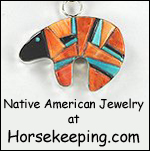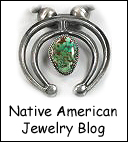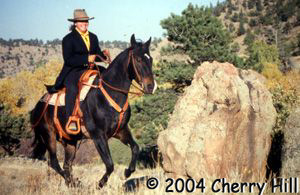How to Control Flies
on Your Horse, around the Stable and
Horse Barn – Part 1
© 2010 Cherry Hill © Copyright Information
If you look in your favorite equine supply catalog, you could find up to 15 pages of fly control products! During fly season, the shelves of your local feed or tack store will display a myriad of insecticides, repellents, fly traps, baits, and masks. The choices for fly control products can be overwhelming. However, if you arm yourself with some basic fly facts and gain an appreciation for the importance of management, you’ll have a better chance of winning your war against flies.
 Stable flies, horseflies, deerflies, horn flies, and face flies are a menace to your horse’s health and well-being. Stable flies, by far the most common, are the same size as a house fly but while house flies just feed on garbage and spread filth, stable flies (both males and females) suck your horse’s blood. Common feeding sites include the lower legs, flanks, belly, under the jaw, and at the junction of the neck and the chest. When stable flies have finished feeding, they seek shelter to rest and digest.
Stable flies, horseflies, deerflies, horn flies, and face flies are a menace to your horse’s health and well-being. Stable flies, by far the most common, are the same size as a house fly but while house flies just feed on garbage and spread filth, stable flies (both males and females) suck your horse’s blood. Common feeding sites include the lower legs, flanks, belly, under the jaw, and at the junction of the neck and the chest. When stable flies have finished feeding, they seek shelter to rest and digest.
The bite of a blood-sucking fly is painful and some horses have such a low fly tolerance that they can be driven into a snorting and striking frenzy or an injurious stampede.  Even fairly tough horses, subjected to a large number of aggressive stable flies, might spend the entire day stomping alternate legs which can cause damaging concussion to legs, joints, and hooves, and result in loose shoes, and loss of weight and condition.
Even fairly tough horses, subjected to a large number of aggressive stable flies, might spend the entire day stomping alternate legs which can cause damaging concussion to legs, joints, and hooves, and result in loose shoes, and loss of weight and condition.
Stable flies breed in decaying organic matter. Moist manure is a perfect medium. The life cycle is 21 to 25 days from egg to adult. A female often lays twenty batches of eggs during her thirty day life span. Each batch contains between 40-80 eggs. When the eggs hatch, the adult flies emerge ready to breed.  (The clouds of small flies on manure are often mistaken for immature stable flies but in fact are a different type of fly which may play an important part in the decomposition of the manure.) The number of flies produced by one pair of adults and their offspring in thirty days is a staggering figure in the millions. That’s why fly prevention is the most important line of defense in your war against flies.
(The clouds of small flies on manure are often mistaken for immature stable flies but in fact are a different type of fly which may play an important part in the decomposition of the manure.) The number of flies produced by one pair of adults and their offspring in thirty days is a staggering figure in the millions. That’s why fly prevention is the most important line of defense in your war against flies.
FIVE LINES OF DEFENSE IN YOUR WAR ON FLIES
Your first line of defense is
TO PREVENT FLIES FROM BREEDING.
For those flies that manage to breed, your second line of defense is
TO PREVENT THE LARVAE FROM HATCHING.
If some of the larvae succeed in hatching, your third line of defense is
TO CAPTURE ADULTS FLIES IMMEDIATELY.
To deal with flies that avoided the traps, your fourth line of defense is
 TO KILL THE REMAINING FLIES.
TO KILL THE REMAINING FLIES.
For flies that escape your previous four efforts, your fifth line of defense is
TO PROTECT YOUR HORSE.
Natural fly protection with Bare Skin Barrier
Watch for parts 2 and 3 of this post coming later this week.
Read Full Post »




















